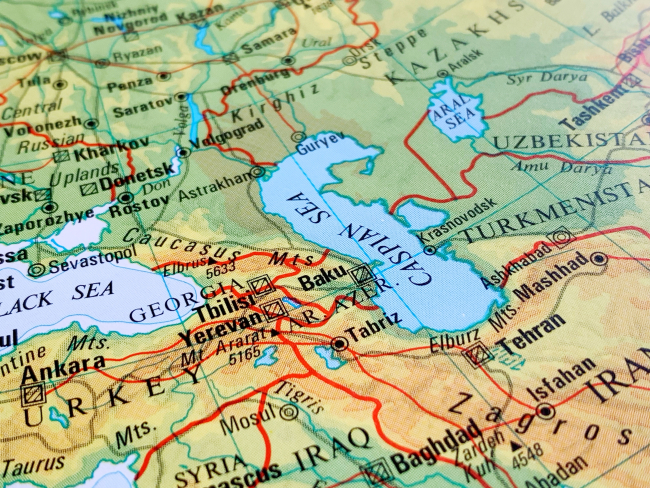U.S.-Russia Strategic Partnership against Nuclear Proliferation: From Declaration to Action

This study is part of a series of reports being published by the joint CSIS/IFRI project "Europe, Russia, and the United States: Finding a New Balance," which seeks to reframe the trilateral relationship for the relevant policymaking communities.
The CSIS/IFRI joint project seeks to reframe the trilateral relationship for the relevant policymaking communities. We are motivated with the possibility that new opportunities may be emerging with leadership change in Moscow and Washington. In particular, we hope that our analyses and recommendations will be useful as France takes over the chair of the EU on July 1, 2008.
The title of the project reflects our sense that relations between Europe, Russia, and the United States have somehow lost their balance, their equilibrium. The situations of the key actors have changed a great deal for a variety of reasons including, but not only, new wars in Afghanistan and Iraq, expansion of NATO and the EU, and the unexpectedly rapid economic recovery of Russia. At a deeper level, we find ourselves somewhat perplexed that nearly twenty years since the collapse of the Berlin Wall and the subsequent conclusion of the Cold War that relations between Europe, Russia, and the United States seem strained on a multitude of issues. In Berlin in June 2008, Russian President, Dmitri Medvedev, invoked the language articulated fifteen years ago by Bill Clinton and Boris Yeltsin about "unity between the whole Euro-Atlantic area from Vancouver to Vladivostok." Despite many achievements over the past fifteen years, it is hard not to conclude that collectively we have under-achieved in building greater trust and cooperation. We are convinced that both for enhanced European security as well as global security, we must increase the level of trust and cooperation between the trans-Atlantic allies and Russia, and that this cooperation must rest on a firm economic and political grounding.
We must humbly acknowledge that we certainly have no "magic bullet," but we hope that the series of papers to be published in the summer and fall of 2008 as part of this project may contribute to thinking anew about some of the challenging issues that we in Europe, Russia, and the United States collectively face.
There are presently clear indications that we are about to see a revival of nuclear energy worldwide. It is important to make this expansion of nuclear energy for the production of electricity and desalinated water as safe and secure as possible. In the coming decade, however, the rate of this expansion will be limited by several factors: in some recipient states, by the lack of an adequate industrial infrastructure, or an insufficient nuclear safety culture with a truly independent control organization; and in supplier states, by a limited capacity to produce certain types of nuclear equipment, such as reactor vessels. Since there's no rush, we have time to "do" nuclear right. Doing it right means, in particular, putting stronger barriers to proliferation in place before, not after, new nuclear capabilities spread.The present analysis has identified five areas (among many others) where the United States, Russia, and the European Union should closely cooperate in order to strengthen the nonproliferation regime: Enforcing UNSC resolutions on Iran; addressing cases of noncompliance; improving security of supply and discouraging the spread of sensitive technologies; strengthening NSG export criteria; and preparing the 2010 NPT review conference.This study is part of a series of reports being published by the joint CSIS/IFRI project "Europe, Russia, and the United States: Finding a New Balance," which seeks to reframe the trilateral relationship for the relevant policymaking communities.
Download the full analysis
This page contains only a summary of our work. If you would like to have access to all the information from our research on the subject, you can download the full version in PDF format.
U.S.-Russia Strategic Partnership against Nuclear Proliferation: From Declaration to Action
Related centers and programs
Discover our other research centers and programsFind out more
Discover all our analysesThe Caspian Sea as an Emerging Energy Hub : Potentials and Limitations
This report analyzes the prospects of the Caspian Sea region — and its key actors except for Russia and Iran — becoming an important energy hub serving the needs of the European Union (EU).
The European Union's Strategic Test in Georgia
The political crisis brewing in Georgia is of an existential nature for the country. What is at stake is Georgia's future as a democratic and sovereign European nation (EU).
Commanders of Putin's Long War: Purged, Reshuffled and Disgruntled
The trend of reshuffling the Russian top military command in the course of a fast-evolving and far from successful war has progressed unevenly both across the Armed Forces’ structures and in time. The rationale for and timing of the abrupt cadre decisions made by Commander-in-Chief Putin often defy logical explanation, and the rare official clarifications are no more informative than the usual information blackout.
Russian Military Manpower After Two and a Half Years of War in Ukraine
In addition to a military victory in Ukraine, the Russian leadership is planning to build up sizable troop formations for a possible conflict with NATO in the Baltic region and the Kola Peninsula. In particular, current plans aim for the military manpower to grow by about 350,000, reaching a total of 1.5 million soldiers and commanders. In the context of the current conflict in Ukraine, this cannot be accomplished without a new wave of mass mobilization.









